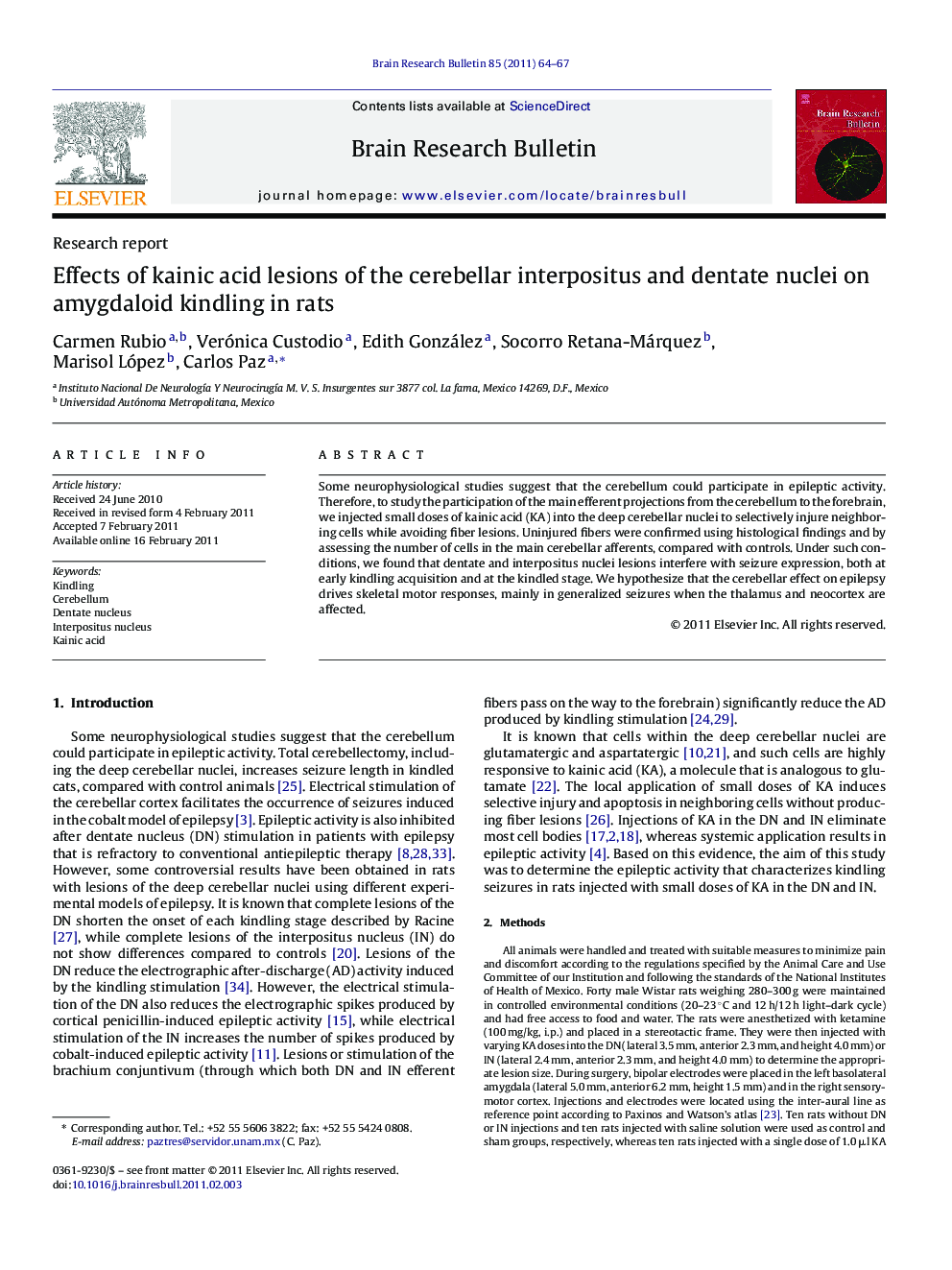| Article ID | Journal | Published Year | Pages | File Type |
|---|---|---|---|---|
| 4319046 | Brain Research Bulletin | 2011 | 4 Pages |
Some neurophysiological studies suggest that the cerebellum could participate in epileptic activity. Therefore, to study the participation of the main efferent projections from the cerebellum to the forebrain, we injected small doses of kainic acid (KA) into the deep cerebellar nuclei to selectively injure neighboring cells while avoiding fiber lesions. Uninjured fibers were confirmed using histological findings and by assessing the number of cells in the main cerebellar afferents, compared with controls. Under such conditions, we found that dentate and interpositus nuclei lesions interfere with seizure expression, both at early kindling acquisition and at the kindled stage. We hypothesize that the cerebellar effect on epilepsy drives skeletal motor responses, mainly in generalized seizures when the thalamus and neocortex are affected.
Research highlights► Some neurophysiological studies suggest that the cerebellum participate in epileptic activity. ► Deep cerebellar nuclei are highly responsive to kainic acid. ► We examine epileptic activity in rats injected with kainic acid in the cerebellar nuclei. ► We found that the dentate and interpositus nuclei lesions interfere with the kindling phenomena. ► Therefore, cerebellar lesions interfere in seizures when the thalamus and neocortex are affected.
